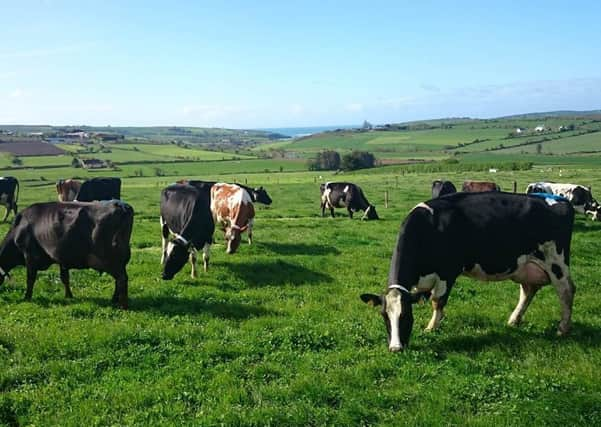Can white clover boost sward productivity?


While farmers on less intensive systems have made good use of white clover and have demonstrated the benefits over many years, the vast majority of more intensive dairy farmers see little or no benefit of white clover in their systems.
Could more Irish dairy enterprises exploit the many benefits of white clover?
Advertisement
Advertisement
Recent field trial results by Brid McCLearn showed a significant increase in milk yield where clover was included in the sward. Similar to Brid’s work, this project was part of the AFBI-Teagasc-QUB PhD programme which is focussed on improving grassland production in Ireland and this article reports results from an intensive ‘farmlet’ dairy study that shows why many farmers may be missing an opportunity to improve their grassland productivity.


Including white clover in mixtures with perennial ryegrass in a farm system can boost sward production and lead to higher milk solids production. Previous research has shown white clover use can reduce the need for chemical nitrogen inputs due to a process called biological nitrogen fixation, which occurs in the root nodules of the white clover plant. However, despite these benefits, white clover is still not being fully exploited on many of Ireland’s dairy farms.
This study assessed the effects of white clover inclusion and perennial ryegrass ploidy (diploids compared to tetraploids) on sward dry matter production in a large-scale dairy management trial at Teagasc Clonakilty, Co. Cork. The purpose of this research was to illustrate how white clover can be maintained and exploited in an intensively managed dairy farm system. The study involved four diploid and four tetraploid perennial ryegrass cultivars, each sown with and without white clover (diploid-only, tetraploid-only, diploid + white clover and tetraploid + white clover). These were grazed at a high stocking rate of 2.75 cows/ha and fertilized at 250 kg N/ha.
Over three years the diploid and tetraploid swards produced the same amount of grass, but when white clover was included there was an extra 1.5 t of herbage dry matter produced each year; (17 t compared to 15.5 t DM/ha/year). The white clover content declined from 36% to 18% over the three years but this still maintained higher sward DM production than swards without any white clover. Overall, for every 1% increase in clover content there was an increase in herbage production of around 40 kg DM/ha. In addition, swards containing clover were grazed out more efficiently, as shown by a decrease in post-grazing height from 4.32 cm in pure grass swards to 3.91 cm in grass/clover swards. The grass/clover swards also had improved nutritive value in terms of digestibility and protein content. The implication of these differences on animal performance has been measured by Bríd McClearn, who studied the dairy cows that grazed these swards. She found increases in milk yield of over 600 kg milk/cow/year and around 50 kg milk solids/cow/year for those cows grazing swards that included the white clover.
Advertisement
Advertisement
The success of this study and other white clover studies at Teagasc has led to new research work on the use of white clover in sheep systems at Teagasc Athenry, Co. Galway, and in beef systems at Teagasc Grange, Co. Meath. The benefits of including clover, ranging from animal production, sward production, environmental sustainability and improved profitability on farm can have a real impact on all Irish grassland dependant enterprises.
The overall aim of Clare’s study was to highlight the benefits of white clover in a real-life farm scenario and demonstrate to farmers how this system can successfully be replicated on their own farm.
Higher levels of sward utilisation have been proven by Teagasc and AFBI to make farms more profitable with Teagasc quoting an extra €171 and €105 net farm profit for each additional 1t DM/ha utilised on dairy and beef farms respectively.
Similarly, AFBI has shown that for Northern Irish enterprises this extra 1t of DM utilized with improving grass quality can increase margin over feed costs by £334/ha on dairy farms and £204/ha on beef farms.
Advertisement
Advertisement
The substantial sward production benefits that were found in the PhD study, along with the expected financial and environmental gains, clearly show that intensive dairy farms and well managed beef farms are missing an opportunity and one that this study has proven can be achieved on farm!